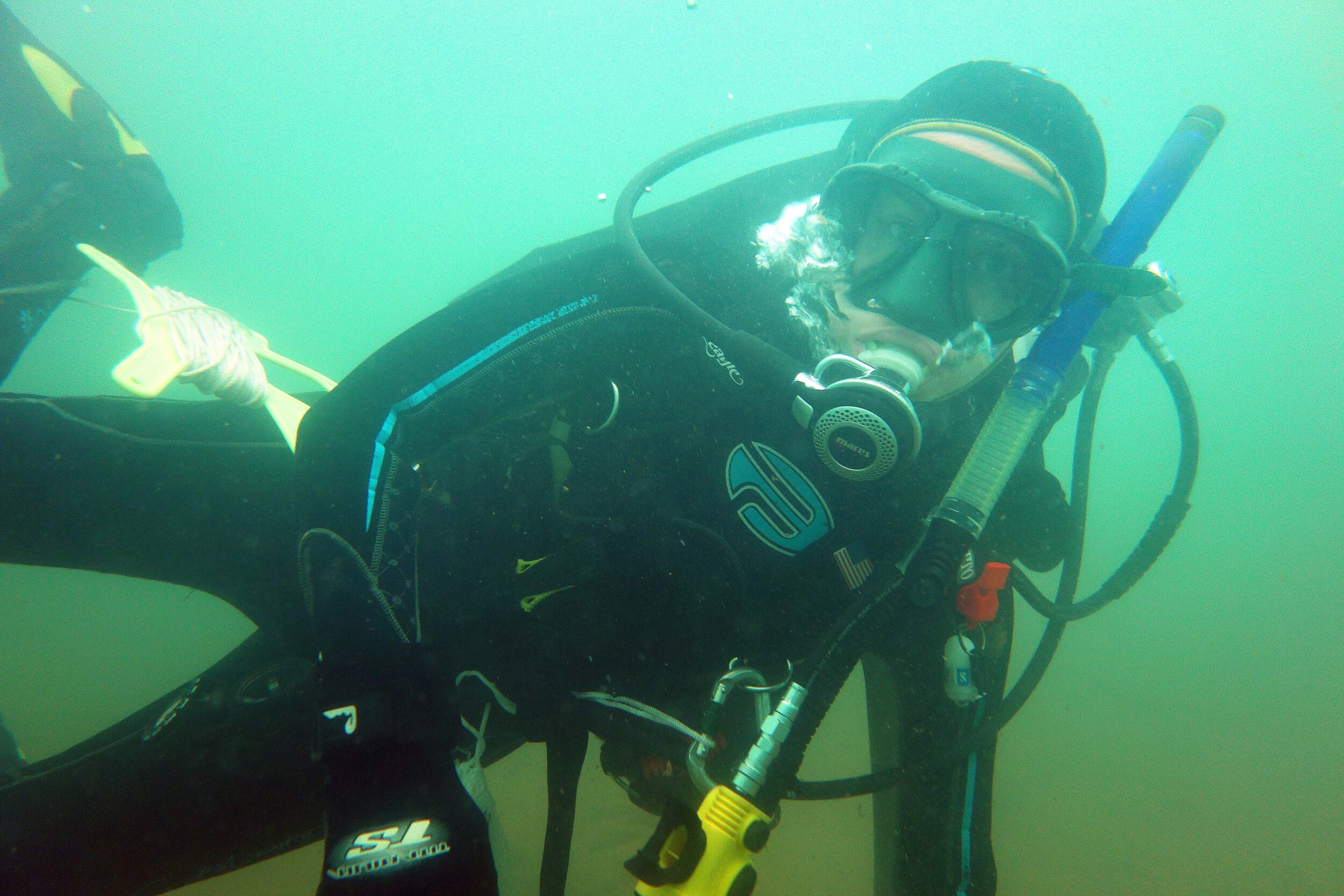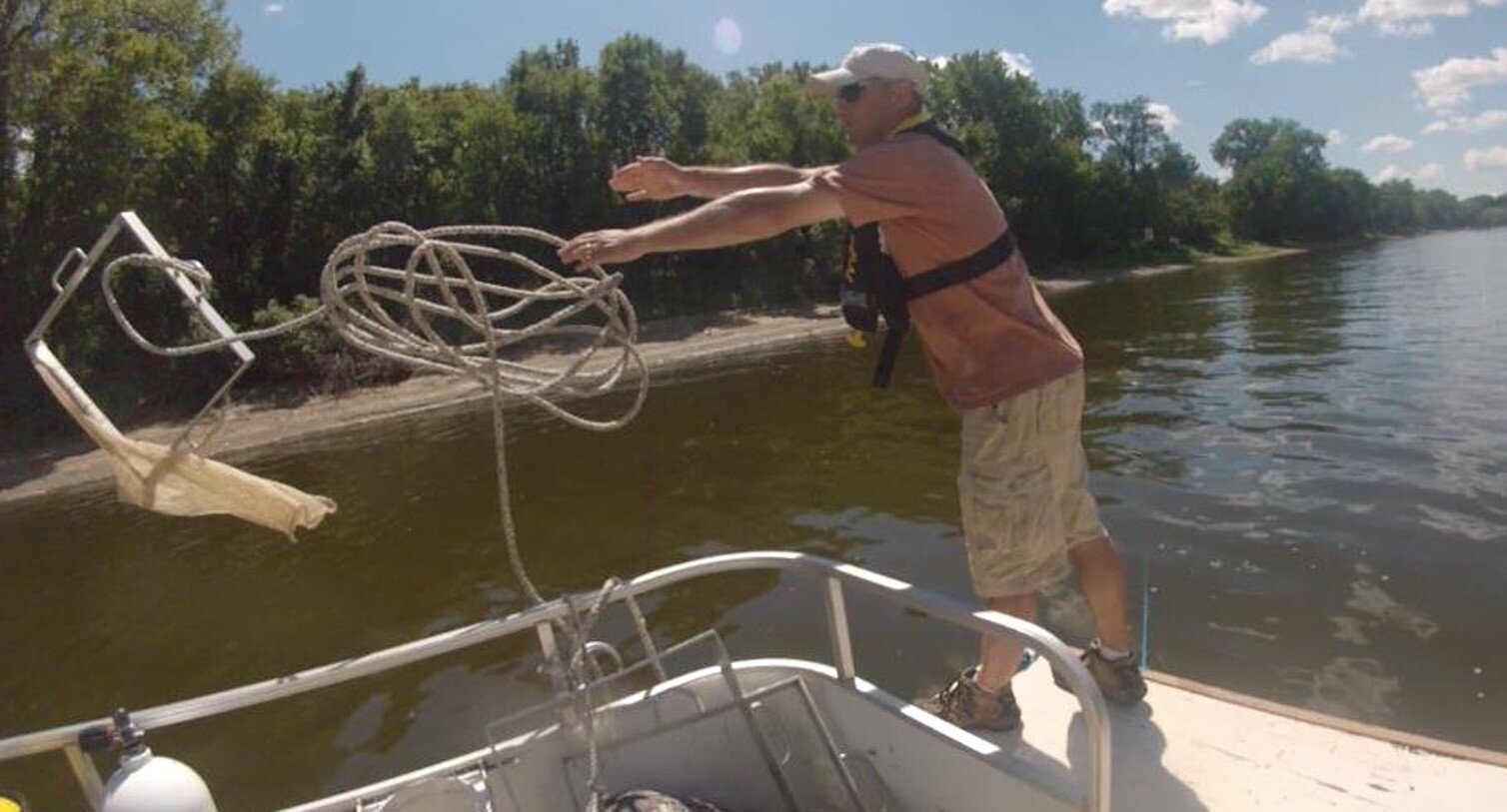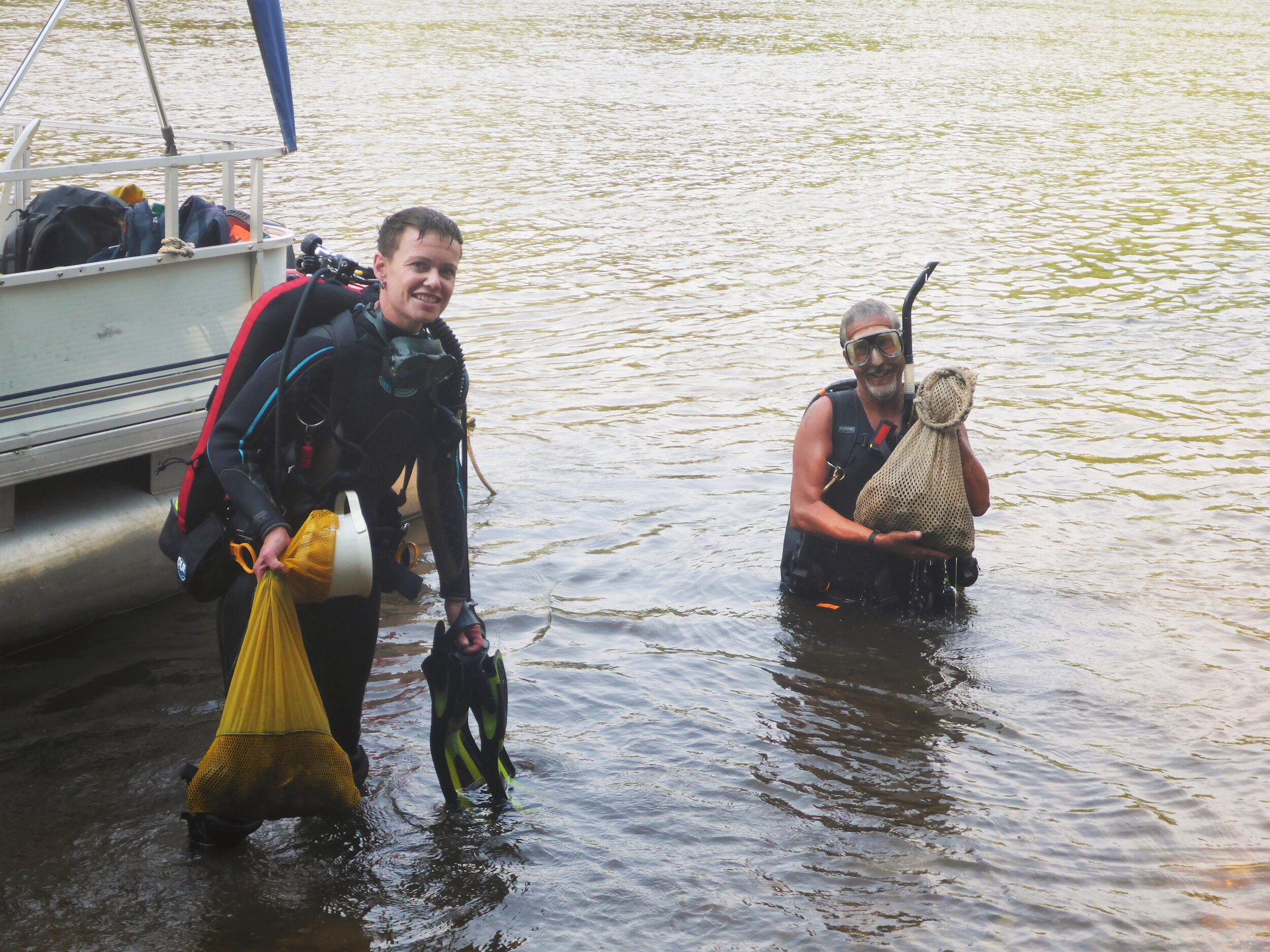Mighty Mussels of the Mississippi River
By Jessica Nelson, Park Ranger, Mississippi National River and Recreation Area
Ask a Minnesotan what their favorite local animal is and you might get similar answers from many folks: wolf, eagle, otter, walleye, fox. But if you ask a park ranger who works at the Mississippi National River and Recreation Area, your most common answer will be mussels.
Hmm…you might question this. After all, mussels don’t seem like the most interesting animal. They just sit on the bottom of the river and you might mistake them for rocks. They don’t even move! Right? Maybe at first glance, a mussel might seem a little lacking in character, but native mussels are one of the most critical animals to the Mississippi River! Not only that, they are also super cool.
What is a mussel?
A mussel is a freshwater relative of other salt-loving, aquatic creatures like oysters, clams, squids, and octopi. Mussels are bivalves, which describes their basic body shape. They are comprised of two shells connected by an elastic hinge, and the actual animal lives within this shell. The mussel creates its own shell that grows as the animal gets older (unlike hermit crabs who must find their shells). In fact, mussels are extremely long-lived creatures and you can age them based on the number of rings on their shells similar to how you can age a tree based on the rings within its trunk. Most mussels can live to be decades old, with some of the oldest mussels in North America living to be a century or older! Pretty cool, right?
Ok, you admit, that is cool. But where would you even find a mussel? Mussels can be found all over the world, but the greatest diversity of mussels is found right here in North America with more than 300 species living in freshwater streams, rivers, and lakes all over the continent. In Minnesota, 50 species of mussels can be found statewide. Historically, the Mississippi River was home to 41 species of mussels.
Mussels live in groups called mussel beds. In many rivers, these beds can measure multiple miles long and contain thousands of individual mussels! How do all these mussels get to the same bed if they don’t move? Well in fact, mussels can move! Mussels move the most as juveniles. When they are in their larval form known as “glochidia”, they attach themselves to the gills of a host fish and that is how mussel populations quickly move to new areas in a river or lake. Eventually they drop off the fish gills and establish new beds. As adults, many stay in one spot their whole lives. They have a foot that comes out of their shell and they can slowly inch themselves along the riverbed to more suitable habitat if necessary. They won’t win any races but might have a shot at a weight lifting competition (they are “muscles” after all).
By now you might be thinking, “Mussels are more interesting than I thought. But why are they so critical to the Mississippi River?” Mussels are ecosystem engineers meaning when mussels are present in an ecosystem they have a significant impact on that area and other organisms. You may be familiar with the most famous ecosystem engineer of all: the beaver! Mussels accomplish their engineering by eating. The way a mussel eats is very different than the way humans eat. Mussels are filter feeders. They take in water through their incurrent siphon, filter out small particles in the water like zooplankton, algae, and bacteria using their gills. Then they expel the clean water back into the river through their excurrent siphon. By feeding, mussels act like a natural water purifier and can completely alter the water quality in the ecosystem! One mussel can filter up to 15 gallons a day which is equivalent to an entire keg of root beer! Humans couldn’t consume that much water (or root beer) in one day, but a small little mussel can! And mussels amplify this filtration power because they live together in beds. When thousands to millions of individual mussels work together, they can filter massive quantities of river water.
Wow, mussels are really important to the health of the river! How are mussels studied at the park and how are they doing? Our park is part of a team of experts comprised of scientists, researchers, and biological technicians. This team uses specialized equipment including scuba gear like wet suits, masks, and oxygen tanks, special mussel collection bags, metal grids for quantifying mussels, underwater cameras, and of course boats to get on the river and get underwater. Mussels are always treated with care when they are out of the water being identified, measured, and tagged. The mussels are then returned to the same area in the river and monitored over time. Through this process, scientists have been able to monitor the status of different mussel species, how their individual populations are doing, and how the mussel population as a whole is doing. Mussels are one of the most critically endangered animals on the planet due to invasive species like zebra mussels outcompeting them for food and habitat, river damming and channelization that can disrupt their reproductive cycle, and pollution that can poison or suffocate them. Despite all these challenges, mussels are faring better in the Mississippi River than they did 150 years ago. Historically, the Mississippi River had 41 different mussel species in it. That number dropped to 0 in the late 1800s due to severe pollution of the river. Today, thanks to research, reintroduction, and cleaner water the Mississippi River has seen the return of 29 species of mussels.
Mussels still face many challenges and we can help them by taking actions at home and on the water to help keep our Mississippi River clean for mussels and other wildlife. Consider doing one of the following:
Reduce salt use in the winter
Limit fertilizer use on lawns and gardens
Keep leaves and grass clippings out of roads and storm drains
Plant a native plant (this will help pollinators as well!)
Clean your watercraft (fishing boat, kayak, canoe, SUP, etc) after use and in between water bodies to prevent the spread of invasive species
Want to learn more? Check our Ranger Allie’s episode of Coffee With A Ranger on mussels!







